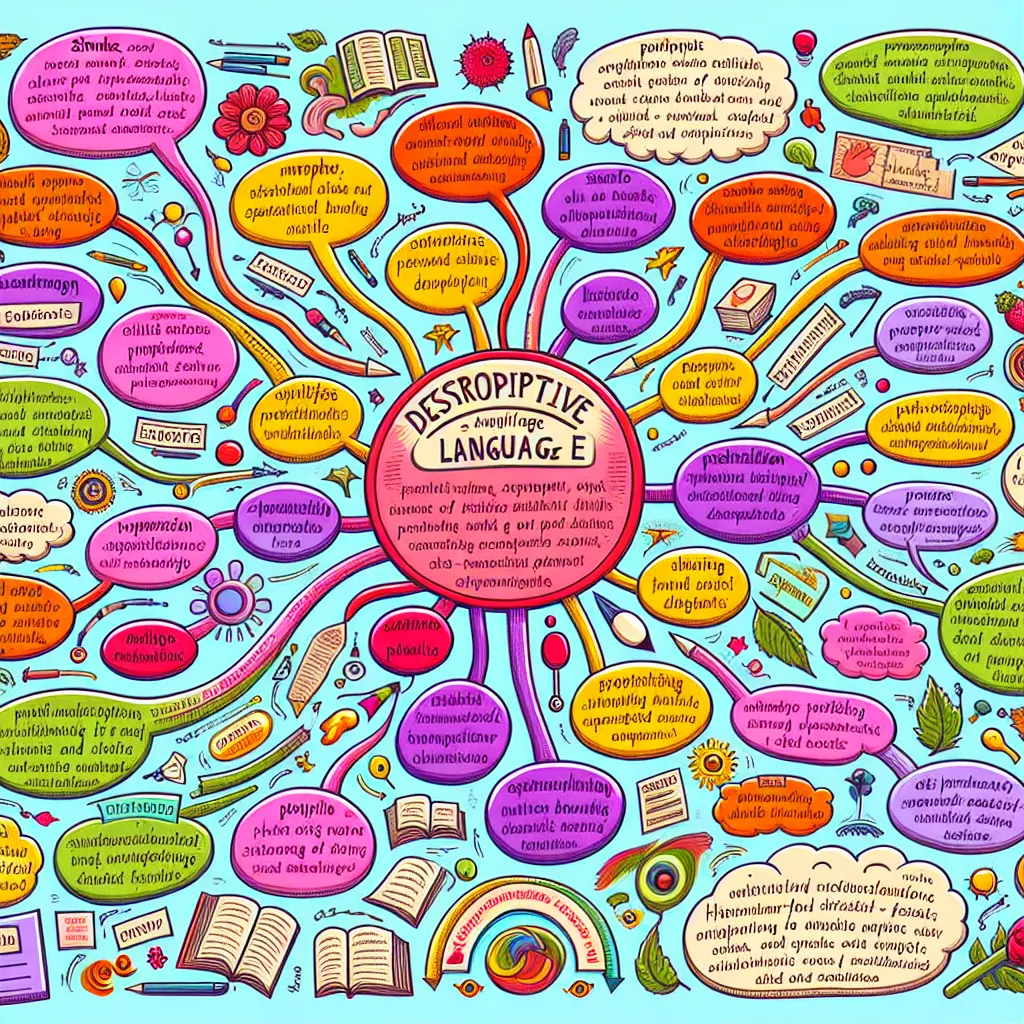Are you looking to enhance your English writing skills and create vivid, engaging descriptions? Mastering descriptive language is a crucial step in becoming a proficient English writer. Whether you’re a student, a professional, or simply someone who loves to write, these tips will help you paint vivid pictures with words and captivate your readers.
 Descriptive Language Techniques
Descriptive Language Techniques
Why is Descriptive Language Important?
Descriptive language is the cornerstone of effective communication in English. It allows writers to create mental images in the reader’s mind, making the text more engaging and memorable. By mastering descriptive techniques, you can:
- Bring your writing to life
- Evoke emotions in your readers
- Make your message more impactful
- Improve your overall English proficiency
Now, let’s dive into the tips that will help you enhance your descriptive writing skills.
1. Expand Your Vocabulary
The Power of a Rich Vocabulary
A diverse vocabulary is the foundation of descriptive writing. The more words you know, the more precisely you can express your thoughts and observations.
How to Expand Your Word Bank
- Read extensively across various genres
- Keep a vocabulary journal
- Use a thesaurus to find synonyms and antonyms
- Practice using new words in context
Remember, it’s not just about knowing more words, but using them appropriately. As you learn new words, make sure to understand their nuances and practice using them in sentences.
2. Use Sensory Details
Engaging the Five Senses
One of the most effective ways to create vivid descriptions is by appealing to the reader’s senses. This technique helps readers experience the scene as if they were there.
Incorporating Sensory Details
- Sight: Describe colors, shapes, sizes, and movements
- Sound: Use onomatopoeia and descriptive verbs for sounds
- Smell: Relate scents to familiar objects or experiences
- Taste: Use flavor adjectives and comparisons
- Touch: Describe textures, temperatures, and physical sensations
For example, instead of saying “The beach was nice,” you could write:
“The golden sand sparkled under the warm sun, while gentle waves lapped at the shore, creating a soothing rhythm. The salty breeze carried the scent of sunscreen and tropical flowers, as seagulls soared overhead, their cries echoing in the clear blue sky.”
3. Master Similes and Metaphors
The Art of Comparison
Similes and metaphors are powerful tools for creating vivid imagery by drawing comparisons between different things.
Using Similes and Metaphors Effectively
- Similes use “like” or “as” to compare: “Her voice was as smooth as silk”
- Metaphors make direct comparisons: “His words were daggers”
Practice creating unique and relevant comparisons that enhance your descriptions without being cliché.
4. Employ Personification
Bringing Objects to Life
Personification involves attributing human characteristics to non-human things. This technique can make your descriptions more dynamic and interesting.
Examples of Personification
- “The wind whispered through the trees”
- “The sun smiled down on the meadow”
- “The old house groaned under the weight of its years”
Use personification sparingly and creatively to add depth to your descriptions without overwhelming the reader.
5. Be Specific and Avoid Clichés
The Power of Precision
Vague descriptions fail to create strong images. Aim for specificity in your writing to make your descriptions more vivid and unique.
Tips for Specific Descriptions
- Use concrete nouns instead of abstract ones
- Choose precise verbs that convey action clearly
- Avoid overused phrases and clichés
For example, instead of “She walked quickly,” try “She strode purposefully, her heels clicking sharply on the pavement.”
6. Use Strong Verbs
Energizing Your Writing
Strong verbs can dramatically improve the impact of your descriptions by conveying action and emotion more effectively.
Choosing Powerful Verbs
- Replace “walked” with verbs like “strode,” “sauntered,” or “trudged”
- Instead of “said,” use verbs like “whispered,” “bellowed,” or “mumbled”
Remember, the goal is to choose verbs that precisely capture the action or emotion you want to convey.
7. Vary Your Sentence Structure
Creating Rhythm in Your Writing
Using a variety of sentence structures can make your descriptive writing more engaging and prevent monotony.
Techniques for Sentence Variety
- Mix short and long sentences
- Use different types of phrases (prepositional, participial, etc.)
- Experiment with sentence beginnings
For example:
“The old oak tree stood tall. Its gnarled branches reached towards the sky, casting intricate shadows on the ground below. Beneath it, a carpet of fallen leaves rustled in the gentle breeze.”
8. Show, Don’t Tell
Painting Pictures with Words
This classic writing advice encourages you to describe scenes and emotions in a way that allows readers to experience them, rather than simply telling them what happened.
Examples of Showing vs. Telling
- Telling: “She was angry”
- Showing: “Her fists clenched, and her eyes narrowed to slits as she glared at him”
Practice translating emotions and situations into descriptive scenes that engage the reader’s imagination.
9. Use Figurative Language Wisely
Enhancing Your Descriptions
Figurative language, including idioms, hyperbole, and understatement, can add depth and interest to your descriptions when used appropriately.
Tips for Using Figurative Language
- Ensure the figurative language fits the tone of your writing
- Use it to clarify complex ideas or emotions
- Don’t overuse it – balance is key
For example, “The city never sleeps” is a common idiom that effectively describes a bustling urban environment.
10. Practice, Practice, Practice
Honing Your Descriptive Skills
Like any skill, mastering descriptive language requires consistent practice and reflection.
Ways to Improve Your Descriptive Writing
- Keep a descriptive journal
- Participate in writing prompts and challenges
- Analyze descriptive passages in literature you admire
- Seek feedback from others on your descriptive writing
Remember, the key to improvement is not just writing more, but writing thoughtfully and critically evaluating your work.
Conclusion
Mastering English descriptive language is a journey that requires patience, practice, and creativity. By implementing these tips, you’ll be well on your way to creating vivid, engaging descriptions that bring your writing to life. Remember to experiment with different techniques, read widely for inspiration, and most importantly, enjoy the process of crafting beautiful, descriptive prose.
To further enhance your English writing skills, consider exploring our articles on tips for learning English by writing short stories and strategies for mastering English sentence connectors. These resources will complement your descriptive writing skills and help you become a more well-rounded English writer.
We’d love to hear about your experiences with descriptive writing. What techniques have you found most helpful? Share your thoughts and tips in the comments below!




